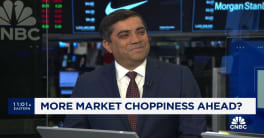Employment indicators have been mixed this month but virtually all economists believe the labor market improved substantially relative to June, even if job destruction continued at a rapid pace. June saw 467k layoffs, and for July the median forecast from economists is 328k.
Hopefully, this morning’s employment report from Canada is no guide. Unemployment north of the border rose by 44.5K in July ― nearly triple the consensus expectation. TD’s Charmaine Buskas comments: “the trend in the labour market is very much to the downside, with the three month trend posing a loss of 31.2K, and the six month trend was a loss of 33.6K.”
Just ahead of the US employment numbers, markets are looking downwards for a third consecutive day.
Key Releases Today:
8:30 ― The most closely watched indicator each month, the Employment Situation report, will show jobs escaping from the economy for the 18th consecutive month in July.
“Since the start of recession, the labor market has lost nearly 6.5 million jobs and we believe that figure may rise as high as 8 million by the end of the labor market cycle,” said Ellen Zentner, senior economist at BTMU. “But the good news is that the pace of job loss has been slowing since January and the unemployment rate, though still on an upward trend, is experiencing smaller monthly increases.”
The median forecast is that 328,000 jobs were lost in July, compared with -467,000 in June. As usual, the range of predictions is wide, from -190k to -375k, but it’s hopeful that all forecasters believe in substantial improvement from June.
Michael Gregory, economist at BMO Capital Markets, looks for a figure close to -300k, which would mark the best result in 11 months.
“On balance, the key leading indicators have pointed to major improvement from June’s -467k print; initial claims, the ISM factory job index and the ADP employment measure all posted much better results, with the ISM non-manufacturing metric only inching lower,” he said. “If anything, the risk is for an even more favorable figure.”
By contrast, HFE chief US economist Ian Shepherdson said there is “no statistical justification for even a sub-300k July payroll number.” He explains: “The ADP report offers our single best clue to the official data, and the 371k drop was not encouraging. The quality of the data means that anything can happen in any given month, but history shows ADP is right more often that it is wrong.”
As for the unemployment rate, it is expected to climb two-tenths to 9.7%. No economists believe it will hit 10% this month, but they’ve been wrong in the past, and a double-digit rate would likely shake markets that are otherwise optimistic about recovery.
Ian Shepherdson believes a 9.7% rate may be too optimistic. “With employment falling by over 300k per month, the trend in the unemployment rate ought to be nearer three tenths per month,” he said.
3:00 ― Consumer credit is expected to decline by $5.0 billion in June, putting the annual change at-1.6%, the the eighth consecutive negative print. In May the decline was a more modest $3.2 billion. Analysts are hopeful that the Cash for Clunkers program will help to end the downward trend by July.
Other Headlines:
Cash for Clunkers Extended: "The Senate passed by a 60-37 vote a proposal to add $2 billion to the government's "cash for clunkers" program, as major U.S. auto makers weighed whether to increase production to restock dealer lots. The surge in auto sales sparked by the $1 billion first phase of the government program has left major auto makers with unusually lean inventories. Consumers who missed the first round of the program could have fewer choices and potentially pay more unless auto makers accelerate production. The additional funds could subsidize 400,000 or more new-vehicle purchases. Under the program, a customer who trades in a vehicle rated at 18 miles per gallon or less qualifies for a government voucher of $3,500 or $4,500 to buy a new car rated at 22 mpg or more." WSJ
Retailers Post Consumption Declines: "Large retailers reported an overall decline in sales for July as consumers, worried about the economy and their jobs, stuck with essential purchases. The slow spending, analysts said, was compounded by lean inventories that left clearance racks, usually a reliable source of midsummer sales, thinner than usual. Analysts said that the postponement of state tax holidays from July to August and the federal “cash for clunkers” program might have contributed to the slower sales. In the retail sector over all, sales slid 5.1% in July from June, according to Thomson Reuters, the 11th consecutive month of declines and the longest losing streak since 2000. The largest retailer, Wal-Mart, no longer reports monthly sales." NYT







